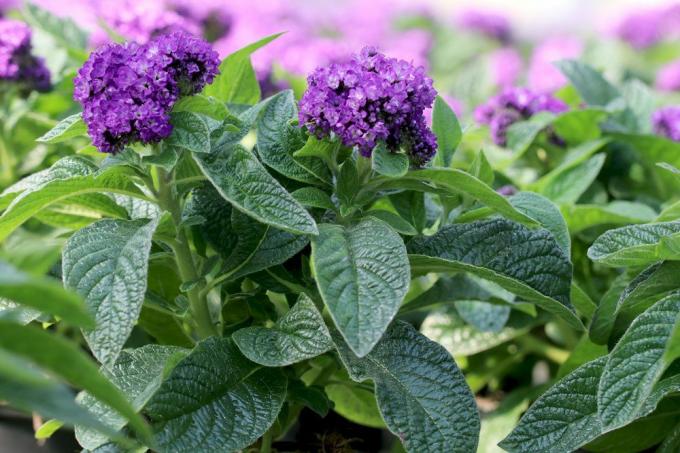
table of contents
- preparation
- time
- Location for wintering
- care
- spring
- frequently asked Questions
the Vanilla flower wintering is not difficult in itself. But is it hardy and what must be paid attention to in the cold season in order to keep the crop healthy?
In a nutshell
- the vanilla flower is not hardy
- a frost-free wintering is necessary
- a bright location is important
- Controls and maintenance during the winter are crucial
- Preparation of the plant is required
preparation
The vanilla flower is called in botanical terminology heliotrope or also known as the solstice. It comes from the Peruvian Andes and is therefore not tolerant of frost. In preparation for wintering, the plant should be taken into account as early as September for the changed conditions and adapted to the different needs.
This includes:

- Adjust fertilization
- Reduce watering
- Remove dead plant parts
- Check leaves for pests and signs of disease
Tip: Cultivating the vanilla flower in a pot or planting it with the pot in the bed makes things easier in late summer or autumn. The preparation and bringing it into the house are simplified.
time
At the latest when the temperature drops to five degrees Celsius, the solstice must be spent in the house. Depending on the region, this can be the case as early as the end of September or as late as October.
Location for wintering
In order for the vanilla flower to hibernate well, the chosen location must meet a number of factors. These are:
- Frost free
- good ventilation and sufficient distance from other crops
- as bright an area as possible
- Temperature between five and ten degrees
The ventilation and the distance between individual plants ensure that pathogens such as fungal spores and pests cannot spread as quickly. However, regular checks are still required. The undersides of the leaves and the soil should also be examined.

Suitable locations include:
- an unheated stairwell
- Garage with windows
- well insulated basement with windows
- Winter garden
Tip: If there is no suitable location for the vanilla flower in your own four walls, you can also spend the winter in a nursery. Both nurseries and some tree nurseries offer such a service.
care
The vanilla flower also needs appropriate care during the winter. It refers to:
- watch out for temperatures between five and ten degrees
- frequent checks for pests and diseases
- brightness
- regular but little watering
- No fertilization
Especially with fertilization and watering, caution must be exercised. Plants cannot absorb nutrients during winter. Therefore, a fertilizer can, for example, cause chemical burns on the roots or disturb the hibernation of the vanilla flower.
Note: The warmer the plant is, the lighter the location should be. In addition, the frequency and amount of water given must also be increased. In order to achieve proper winter rest, the temperature should still not exceed ten degrees Celsius.

spring
When the vanilla flower can be put outside or planted again after wintering in spring, depends on the temperatures.
The plant may only be outside again when frost is no longer to be expected and the temperatures are at least five degrees Celsius even during the night. In addition, there should be no sudden change.
For the first two weeks it makes sense to put the solstice in a shady and sheltered place. Afterwards, a gradual change of position can take place in more direct sun.
In colder regions it also makes sense to cultivate the vanilla flower in a tub. This makes it possible, for example, in late frost, to bring the plants indoors if necessary.
frequently asked Questions
In regions with a very mild climate and rust-free winters, it may well be possible to overwinter the vanilla flower outdoors. For this, however, it must be cultivated in a tub. Insulation from below and around the planter will help protect the solstice.
When the plant is taken outside again, watering and fertilization can be increased or taken up again. It is also advisable to change the substrate in order to add nutrients and, if necessary, to choose a larger planter.
The visual inspections of the plants are crucial in winter quarters, as pests or germs can be introduced by individual plants. Due to the small distance between the plants, transmission is very quick and easy. In addition, the vanilla flower cannot hold its ground against weakening during winter.

